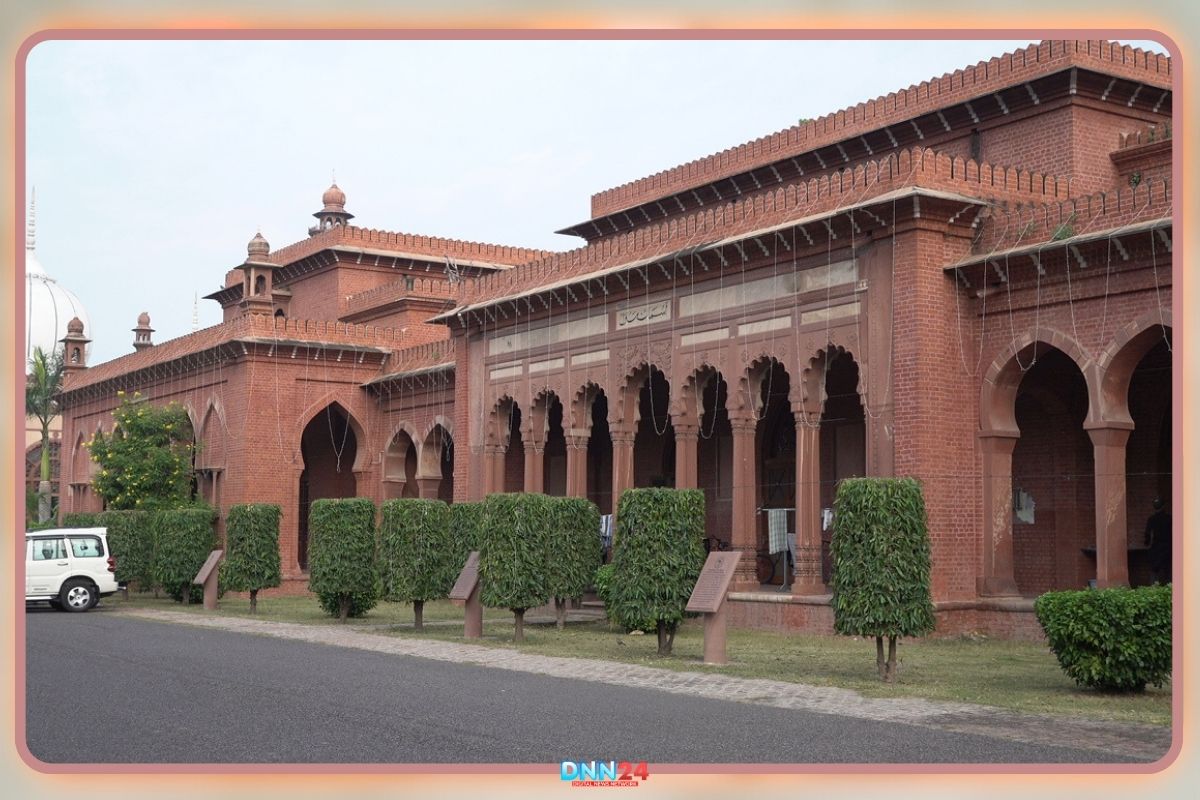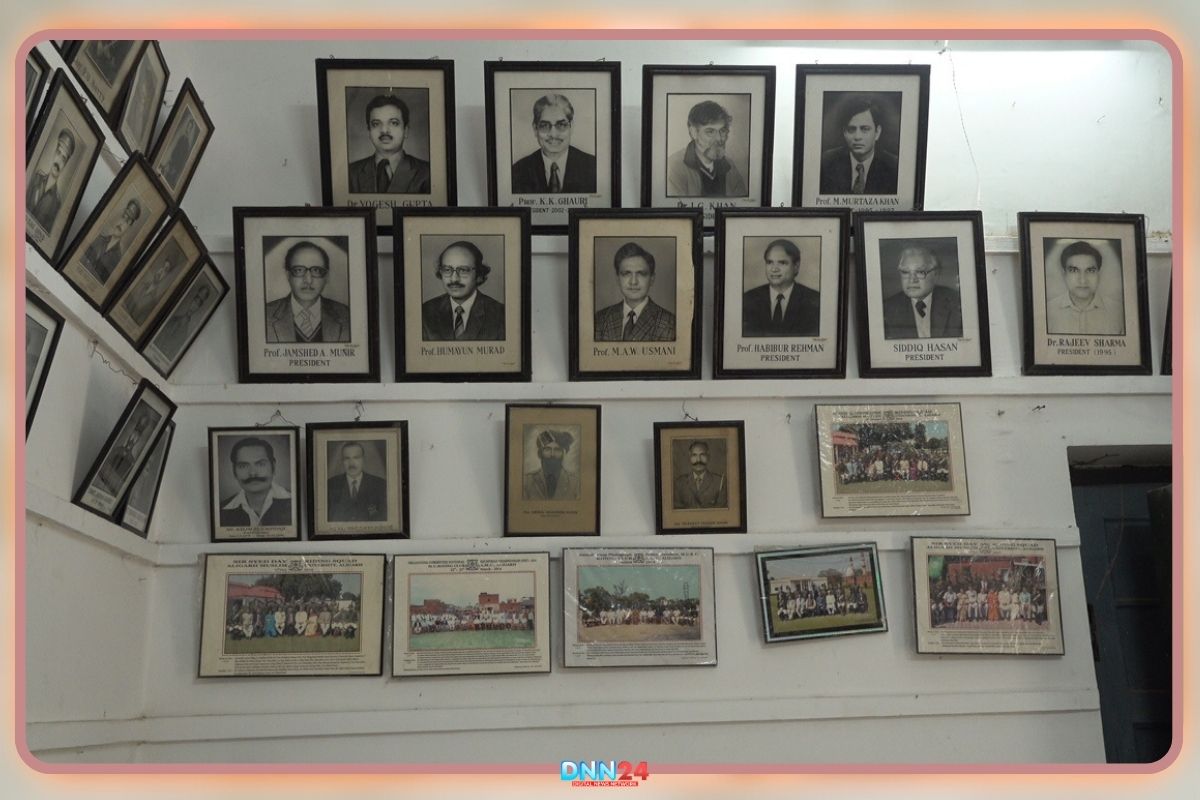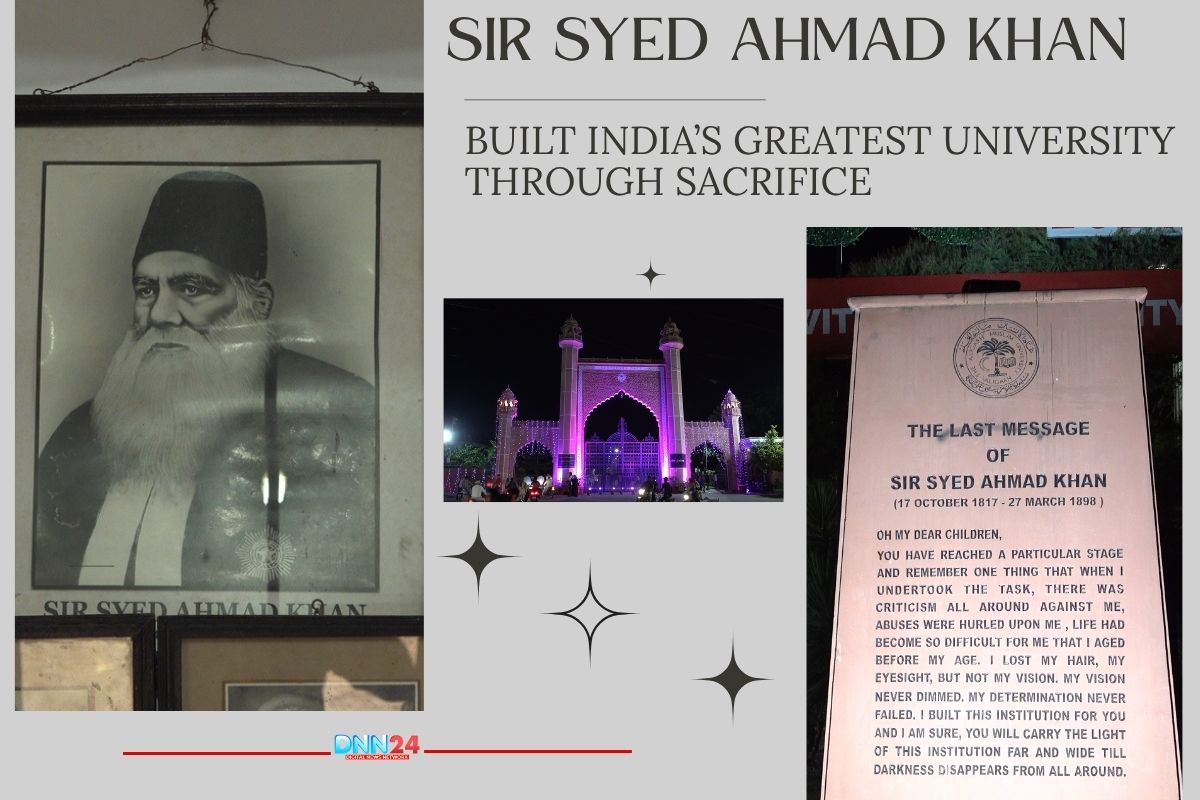The transformation of a simple madrasa into one of the world’s most respected universities is a story of extraordinary determination and sacrifice. Aligarh Muslim University stands today as a monument to one man’s unwavering vision. Sir Syed Ahmad Khan founded this institution in 1875, a time when private universities were prohibited in India. He began with a modest school that would eventually receive university status from the British Council, even before India’s independence. The campus now produces thousands of graduates annually, each carrying forward a legacy built on sacrifice and dedication.
What distinguishes this story is not merely the institution’s grandeur but the price paid to create it. Sir Syed endured public humiliation, financial struggles, and fierce social opposition. Yet his resolve never wavered. The sprawling campus today mirrors Cambridge University’s architectural magnificence, with buildings named after India’s most outstanding leaders, including Maulana Azad, Indira Gandhi, Sarojini Naidu, and BR Ambedkar.
The Cambridge Vision in Colonial India
Sir Syed Ahmad Khan modelled his university after Cambridge, which he visited during his travels to England. The magnificent structures he commissioned during British rule reflected his ambition to match the world’s finest institutions. This became India’s first major institution offering a combination of modern education and traditional learning. Maulana Azad Library emerged as Asia’s largest repository of knowledge, housing millions of volumes. Sir Syed House preserves the founder’s personal effects. The original Sir Syed Hall now exists as separate North and South sections. Every building tells stories of vision and achievement. The architecture speaks of an era when education represented the path to social transformation and empowerment.

Dancing with Ankle Bells for Education
Creating Aligarh Muslim University demanded resources Sir Syed did not possess. What followed tested his dignity and resolve beyond imagination. He travelled extensively seeking donations from anyone willing to contribute. Professor Badruduzzah Khan shared a remarkable incident with DNN24. When Sir Syed approached someone for funds, the man threw his shoe at him in contempt. Rather than retreat in shame, Sir Syed collected the shoe and kept it as a contribution to his cause.

The sacrifices grew more extraordinary. Sir Syed wore ghungroos and danced publicly to collect funds, abandoning all personal dignity for his greater mission. He approached courtesans and gratefully accepted their donations, understanding that money for education held no taint regardless of its source. He constantly reminded people that he begged not for himself but for the community’s future. Collecting coins painstakingly over the course of decades, he finally accumulated sufficient funds to establish the university by 1920. His humility became legendary, inspiring others to support the cause. Today’s students rarely realise the tremendous price in dignity and hardship their founder paid to create their institution.
From MAO College to University Status
The institution began as Mohammedan Anglo-Oriental College in 1875, embodying Sir Syed’s philosophy of blending Eastern wisdom with Western knowledge. He believed Indian Muslims needed modern education without abandoning their cultural identity. Lord Lytton, the Viceroy and Governor General, laid the foundation stone on 8 January 1877. The college operated successfully for over four decades, building an exceptional reputation.
In 1920, the British government elevated it to university status, creating Aligarh Muslim University. Strachi Hall, the first campus building, still stands as testimony to those pioneering days. The campus holds profound significance for Muslims across India, representing educational achievement and community pride. Victoria Gate, built in 1883, welcomes visitors with imposing grandeur. The Jama Masjid serves as the spiritual heart of campus life.
A Home Preserving History
After retiring from government service in Benares, Sir Syed returned to Aligarh in 1876. His son, Syed Mahmood, purchased a house that became Sir Syed House. Here, the founder spent his final twenty years in tireless university work. After his death, the house was converted into the Sir Syed Academy in 1974.

Visitors today see personal belongings that offer glimpses into his daily existence: the sofa set where he entertained guests, his work table, shawls, a walking stick, and a compass. On Sir Syed Day, exhibitions display precious letters and photographs from his era, preserved behind glass. These artefacts connect new generations with the man whose vision created their university. For admirers of his philosophy, visiting this house resembles stepping through time itself.
The Scholar’s Literary Legacy
Sir Syed Ahmad Khan was a prolific writer whose intellectual contributions matched his educational reforms. He authored over one hundred books spanning a diverse range of subjects. His celebrated works include ‘Hayat-e-Javed,’ ‘Tahzeeb-ul-Akhlaq’ on ethics, ‘Maqalat-e-Sir Syed’ collecting his essays, ‘Asar-us-Sanadid’ documenting Delhi’s monuments, and ‘Asbab-e-Baghawat-e-Hind’ analysing the 1857 uprising. These works demonstrate his commitment to preserving heritage while encouraging critical thinking.

Every 17 October, the university celebrates Sir Syed Day with great reverence. The day begins with Fajr prayers at the university mosque, followed by a recitation of the Quran. The Vice Chancellor leads teachers and officials in Chadar Poshi, the traditional ritual of offering prayers at Sir Syed’s grave. This ceremony connects current generations with the enduring values of their founders.
The Making of a Visionary
Born 17 October 1817, into a distinguished Delhi family, Sir Syed Ahmad Khan inherited a legacy of scholarship and service. His father, Syed Muttaqi, advised Emperor Akbar II personally. His grandfather, Syed Hadi Alamgir, held high court positions. His maternal grandfather, Khwaja Fariduddin, served as minister in the royal court. This Mughal connection shaped his worldview and provided access to education and influence. His mother, Azizunnisa, a powerful and educated woman, had a profound impact on his character. Sir Syed received his initial education from his grandfather and learned court procedures from his uncle, Maulvi Khalilullah.

His intellectual abilities encompassed mathematics, medicine, and literature with equal mastery. As one of his era’s most influential Muslim leaders, he strongly advocated for Urdu as the collective language of Indian Muslims. Umar Salim Pirzada, AMU’s Public Relations Officer, told DNN24 that Sir Syed showed how to light lamps in storms, teaching that knowledge can illuminate countless homes.
Recognition Through Service
Sir Syed began his career as Naib Munshi in Agra’s court, earning promotions through dedicated service. His postings included Mainpuri, Fatehpur Sikri, Delhi as Sadar-e-Ameen, Bijnour, Muradabad as Sadrus Sudur, Ghazipur, and finally Benares. His fairness and efficiency earned respect from British administrators and local populations alike. In 1888, the British government conferred knighthood upon him, recognising his contributions to education and social reform. This honour enhanced his fundraising efforts, though Sir Syed never let accolades distract him from his mission. Even in his final years, he remained actively engaged in university affairs, ensuring his vision would flourish beyond his lifetime.
Alums Who Shaped Nations
Aligarh Muslim University produced leaders who transformed India and beyond. Dr Zakir Husain became India’s President and received the Bharat Ratna. Khan Abdul Ghaffar Khan, also known as the Frontier Gandhi, was awarded this highest honour. Hamid Ali Ansari served as Vice President. Pakistan’s first Prime Minister, Liaqat Ali Khan, studied here.

Beyond politics, the university shaped scholarship and the arts. Professor Irfan Habib became a renowned historian. Poets Asrarul Haq Majaz, Shakeel Badayuni, and Shahryar enriched Urdu literature. Hockey legend Major Dhyan Chand and cricketer Lala Amarnath brought sporting glory to India. Kaifi Azmi’s poetry inspired movements. Rahi Masoom Raza’s novels captured the essence of Indian society. Javed Akhtar transformed cinema with his lyrics. Actor Naseeruddin Shah redefined Indian performance art. These names represent thousands who carried AMU’s legacy into diverse fields, proving that Sir Syed created not merely a university but a movement that shaped society itself.
Also Read: Abdul Khaliq Reshi and Kashmir’s Grape Paradise: Sweet Legacy of Repora
You can connect with DNN24 on Facebook, Twitter, and Instagram and subscribe to our YouTube channel.

